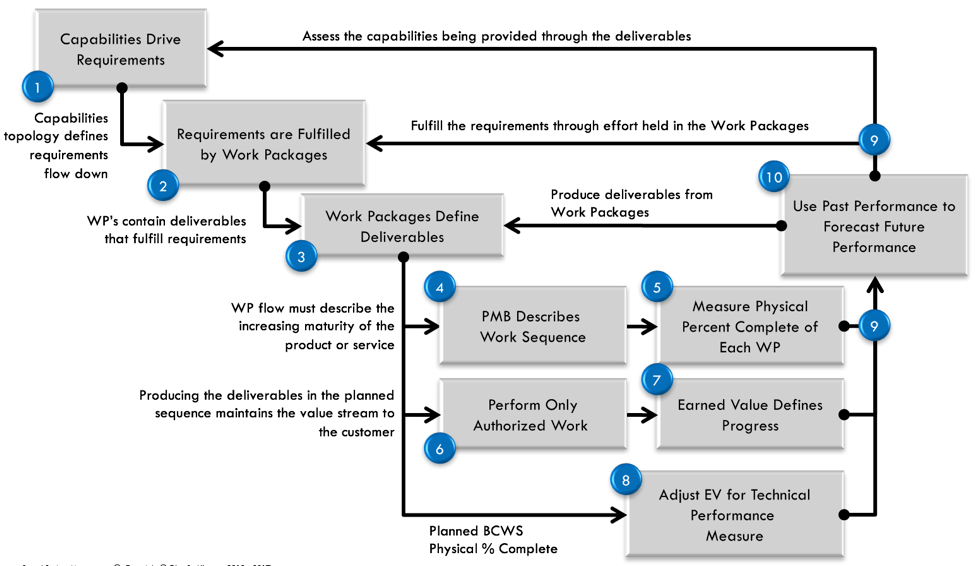With the five processes from the last blog, let’s look at the practices that implement those processes. These practices are focused on using earned value management processes, risk management processes and general government program management processes. Here’s the summary of these practices and how they are related.
The 10 practices of project success guide the application of the processes from the last post. These practices encompass the entire lifecycle of a project or program, from inception and the discovery of the business or system capabilities, through requirements elicitation, to the creation of the performance measurement baseline (PMB), to the execution of this baseline.
The practices provide several feedback loops to assure that subsequent activities provide measurable information to correct gaps that exist in the previous activities. This iterative and incremental approach to program management assures the periods of assessment for corrective actions are appropriately spaced to minimize risk while maximizing the delivered value to the program.
The principles, processes, and practices can be the basis of conventional as well as lean and agile program management methods.
The illustration below are the 10 practices. Each practice is developed in detail later in this handbook. For now, understanding the dependencies between the principles is important.

Let’s look at some of the details of each practice:
- Capabilities drive requirements. Use these operational concepts (OC) to describe how the system achieves the beneficial outcomes before any commitments are made to the implementation.
- Requirements identify technical and process deliverables. Derive the system requirements for each system capability. Assure a requirement exists for each system capability needed to fulfill the mission of the system. Lastly, test requirements by answering the question “why do we need this feature, function, service or capability?”
- Work packages describe production of deliverables. Work contained in the work package (WP) produces a single or small number of deliverables. Use performance measures at the work package-level to assess the progress of the increasing maturity of the deliverables produced by each WP.
- Master schedule sequences deliverables. Arrange work packages in an un–constrained activity network. Define the exit criteria for each WP that describes what “done” looks like and what technical maturity is needed to proceed to the next WP.
- Progress is measured as physical percent complete.
- Work authorization assures work packages produce planned progress. Executing the work packages in the agreed sequence assures the program proceeds as planned.
- Apply earned value management to measure progress to plan. This post is too short for this topic, but OMB A-11 Part 7 describes how and why earned value management is applied to federal acquisition.
- Technical performance measures (TPM) assures progress to plan is actually delivered. TPM are measures that describe the technical attributes to fulfill the capabilities.
- Performance feedback adjusts the work sequence. Adjust the work package sequence using feedback from the performance measures to maintain compliance with the measures of effectiveness (MoE), measures of performance (MoP), and technical performance measures.
- Use past performance to forecast future performance.
Glen Allenman is part of the GovLoop Featured Blogger program, where we feature blog posts by government voices from all across the country (and world!). To see more Featured Blogger posts, click here.





Leave a Reply
You must be logged in to post a comment.